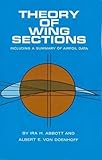Wings works the way they do because othey curve the path of the air that flows around them. They deflect the air flow, thus creating a force. http://amasci.com/wing/airgif2.html
The "coanda effect" breaks if you give your lifting surface too high an angle of attack (stall), but a reduced quantity of lift is still produced.
Planes can fly upside down because the increase the angle of attack, and the path the air takes IS longer on the top (flat surface) then it is at the bottom (curved surface). A plane with assymetrical wing section flown upside down at a zero angle of attack will go down. This is why aerobatic planes always use symetrical wing sections.
Flat wings work very poorly and stall at very low angles of attack, beause of flow separation, but they do create lift, because the point where the flow separates between upper and lower surface is not at the leading, but somewhere on the lower surface. See this image: http://www.arvelgentry.com/images/plate2.jpg
This guy should read "Theory of Wing Sections", by Abbbott and Van Doenhoff (http://www.amazon.co.uk/Theory-Sections-Dover-Books-Physics/...) before posting misleading essays.
Sorry about the rant, but I don't want anyone taking what this guy writes for the absolute truth...
Obligatory xkcd reference: http://xkcd.com/386/


Theory of Wing Sections by Abbott and von Doenhoff (1959)
https://www.amazon.com/Theory-Wing-Sections-Aeronautical-Eng...